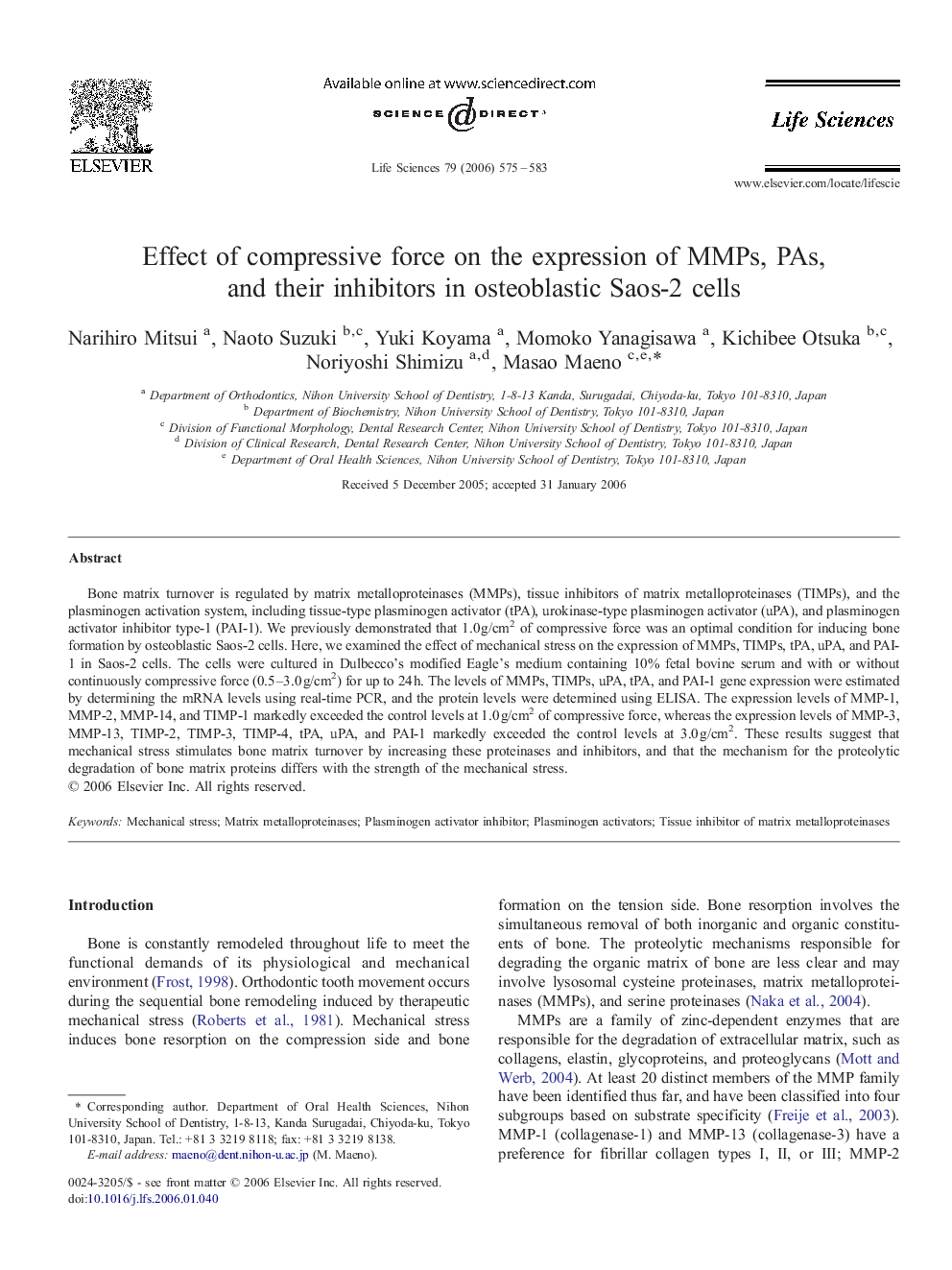| Article ID | Journal | Published Year | Pages | File Type |
|---|---|---|---|---|
| 2554199 | Life Sciences | 2006 | 9 Pages |
Bone matrix turnover is regulated by matrix metalloproteinases (MMPs), tissue inhibitors of matrix metalloproteinases (TIMPs), and the plasminogen activation system, including tissue-type plasminogen activator (tPA), urokinase-type plasminogen activator (uPA), and plasminogen activator inhibitor type-1 (PAI-1). We previously demonstrated that 1.0 g/cm2 of compressive force was an optimal condition for inducing bone formation by osteoblastic Saos-2 cells. Here, we examined the effect of mechanical stress on the expression of MMPs, TIMPs, tPA, uPA, and PAI-1 in Saos-2 cells. The cells were cultured in Dulbecco's modified Eagle's medium containing 10% fetal bovine serum and with or without continuously compressive force (0.5–3.0 g/cm2) for up to 24 h. The levels of MMPs, TIMPs, uPA, tPA, and PAI-1 gene expression were estimated by determining the mRNA levels using real-time PCR, and the protein levels were determined using ELISA. The expression levels of MMP-1, MMP-2, MMP-14, and TIMP-1 markedly exceeded the control levels at 1.0 g/cm2 of compressive force, whereas the expression levels of MMP-3, MMP-13, TIMP-2, TIMP-3, TIMP-4, tPA, uPA, and PAI-1 markedly exceeded the control levels at 3.0 g/cm2. These results suggest that mechanical stress stimulates bone matrix turnover by increasing these proteinases and inhibitors, and that the mechanism for the proteolytic degradation of bone matrix proteins differs with the strength of the mechanical stress.
